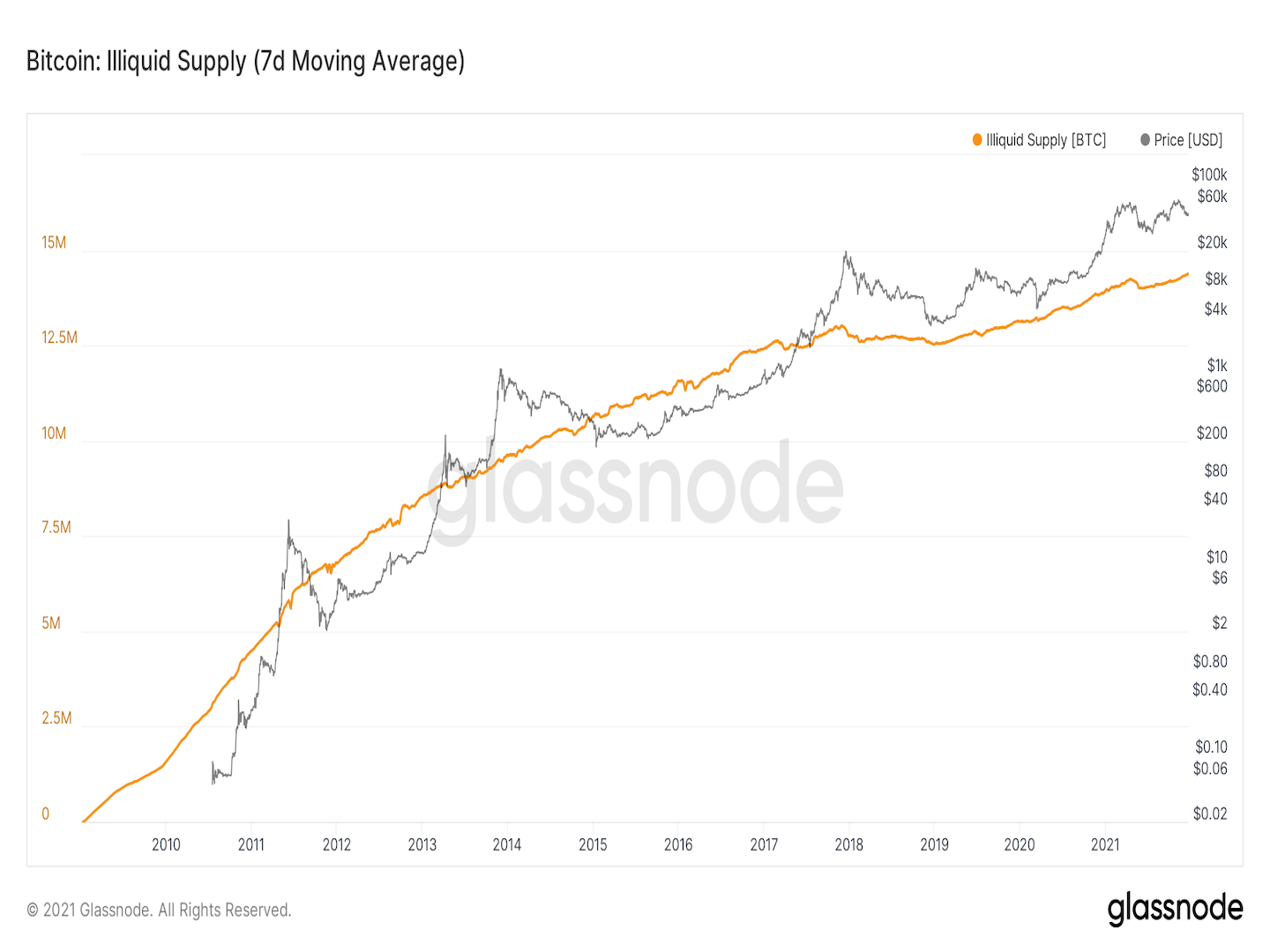(Edited by James Rubin)Good morning. Here’s what’s happening this morning:Market moves: Bitcoin rose above the $49,000 level, hours after a price p
(Edited by James Rubin)
Good morning. Here’s what’s happening this morning:
Market moves: Bitcoin rose above the $49,000 level, hours after a price pump during Asian hours. The U.S. market has been largely quiet during the holiday week.
Technician’s take (Editor’s note): Technician’s Take is taking a holiday hiatus. In its place, First Mover Asia is publishing the first in a series of stories on the year in cryptocurrency markets by markets analyst Damanick Dantes.
Catch the latest episodes of CoinDesk TV for insightful interviews with crypto industry leaders and analysis.
Prices
Bitcoin (BTC): $49,071 +4.65%
Ether (ETH): $4,024 +2.4%
Markets
S&P 500: $4,649 +1.7%
DJIA: $35,492 +1.6%
Nasdaq: $15,341 +2.4%
Gold: $1,789 -0.1%
Market moves
After a price bump during Asian hours, bitcoin was well above the $48,000 level for all of Tuesday after the opening of U.S. markets. At the time of publication, bitcoin had soared beyond the $49,000 threshold.
While bitcoin sellers have dominated the market during Asian hours for most of 2021, as CoinDesk has reported, the gains happened earlier Tuesday. This timing suggested that the sell-off related to China’s strengthened crypto trading ban may be ending soon.
“With Huobi completing its China exit last week, the selling pressure from Asia appears to be slowing down,” Hong Kong-based crypto lender Babel wrote in its weekly newsletter dated Tuesday.
Crypto exchange Huobi said in September that it will retire all existing users in mainland China by the end of this year, after China announced tougher measures on crypto trading.
On a more positive note, bitcoin’s illiquid supply has been increasing since a drop in May, reaching above 14 million, according to data from blockchain data firm Glassnode. The so-called illiquid supply shows the total supply of the oldest cryptocurrency held by illiquid entities.

With roughly 70% of bitcoin considered as “illiquid,” it suggests that “the supply of bitcoin available for purchase by new entrants is decreasing,” according to Babel.
It “will strongly support the price when bullish sentiment returns,” Babel added.
Market wrap
Market Wrap Year-End Review: Bitcoin Starts Off in a Frenzy: In this first episode of Market Wrap’s review of crypto markets in 2021, we recall the powerful rally that ushered in the new year. Retail traders piled in, even as some institutional investors sounded warnings about rampant speculation. (By Damanick Dantes)
Hello, Market Wrap readers! During the final two weeks of 2021, we’re using this space to recap this year’s most dramatic moments in cryptocurrency markets – and highlight the key lessons from this fast-evolving corner of global finance. Over a series of eight posts starting on Dec. 20 and running through Dec. 30, we’ll recap what shook crypto markets this year. (For the latest crypto prices and news headlines, please scroll down.)
In our first episode today, we show how, even as bitcoin’s price soared in the early days of the year, some savvy institutional investors were already growing cautious on cryptocurrencies after a wave of buying during the fourth quarter of 2020.
Bitcoin (BTC) started 2021 on a strong note, gaining nearly 40% during the first week of January and surging to a new all-time high around $40,000.
But not everyone was convinced the rally could be sustained.
Retail traders piled in, while some institutional investors started to raise concerns about rampant speculation.
As early as December, Jeff Dorman, chief investment officer at crypto asset management firm Arca, had told CoinDesk that “there is a good chance that actively managed hedge funds and passive indexes built around high allocations to bitcoin have a very short shelf life.”
Indeed, a few funds established bitcoin positions but did not “hold on for dear life” – a commonly misconstrued back-formation of the crypto-jargon term “HODL,” which originally appeared as a fast-typing (or maybe drunk?) person’s attempt to type the world “hold.”
Bitcoin quickly advanced from $30,000 to $40,000 within the first five trading days of January – an impressive gain that fueled even more market excitement. The sharp price rise in BTC contributed to a $1.1 billion profit for Ruffer Investments, a U.K. based investment management firm, in just five months. By June, Ruffer stated that a “speculative frenzy” in cryptocurrencies forced the firm to exit its bets on further gains.
And Ruffer was not alone in its concern about market exuberance. Volatile price swings caused other institutional investors to doubt a prolonged crypto rally.
Sure enough, by the end of January, bitcoin had declined about 30% from a January high of near $40,000. Shortly after the price drop, Scott Minerd, chief investment officer at the Guggenheim global investment firm, said he didn’t believe bitcoin’s investor base was “big enough” or “deep enough” to keep prices at current levels.
“Right now, the reality of the…
www.coindesk.com
